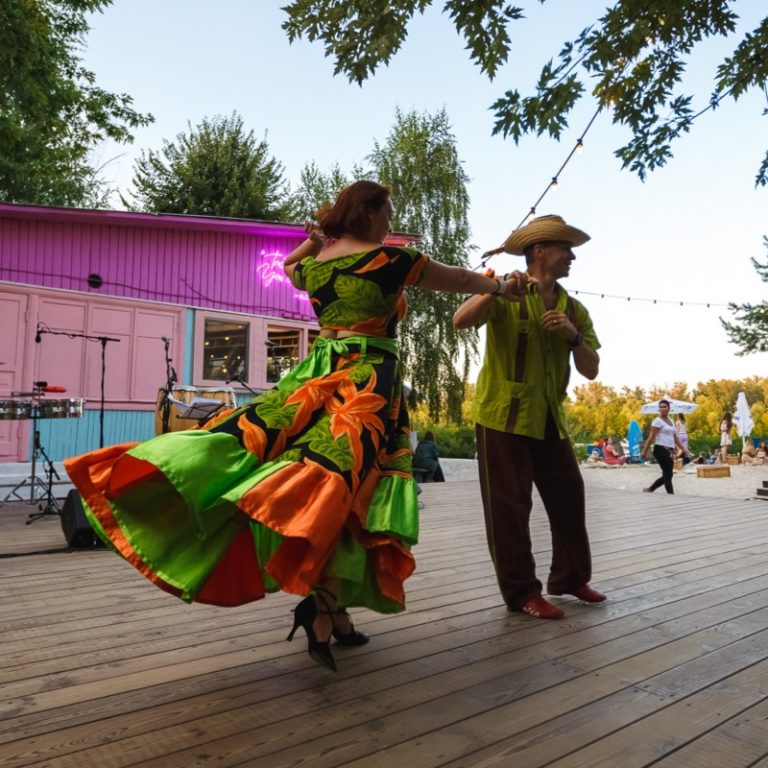The Cuban community in Ukraine began to take shape in the 1960s, after the socialist system proclamation in the island nation. Diplomatic relations and student exchange programs between Cuba and the Soviet Union continued from then until Ukraine’s independence. Cubans came to Ukrainian universities to study engineering and military competences. For many Cubans who disagreed with the dictatorial regime of then-leader Fidel Castro, Ukraine, like the rest of the Union, was perhaps the only possible direction for legal emigration. Today, up to 400 ethnic Cubans live in Ukraine, including those who introduce Ukrainians to the culture of Latin American dance and Cuban music by opening dance schools and founding musical groups.
Cheerful music, energetic rhythms, smiling people, and bright colours are almost the first associations that arise with the word ‘Cuba’. The Cuban community in Ukraine, although being small, is very friendly and open. Its representatives arrived in Ukraine during the Soviet times and opened the first school of Latin American dance in independent Ukraine. Later it grew into the entire network of schools. This summer, Trukhaniv Island in Kyiv has become a piece of Cuba in Ukraine. Here, on the banks of the Dnipro river, open-air concerts of Cuban music and masterclasses in Latin American dance were held by an ethnic Cuban Reinaldo Powell and his daughter Anabel.

Reinaldo Powell and his dance school
In the heart of Kyiv, in the Podil district, there is one of the centres of Cuban culture. The Salsa Club Kyiv Latin American dance school has been operating here for almost 25 years. In 1997, the Cuban Reinaldo Enrique Leyva Powell and a Ukrainian Yulia Hannochko founded the first Latin American dance studio in Ukraine.
The Cuban atmosphere is felt from the first minutes of being in the dance hall. Reinaldo shows the paintings by Cuban artists, as well as numerous awards, cups, diplomas, and acknowledgements decorating the walls of the studio:
“Each cup is labour, energy, the desire of my students to present first of all themselves and us as a studio in different cities of Ukraine. It is therefore each cup has its value.”
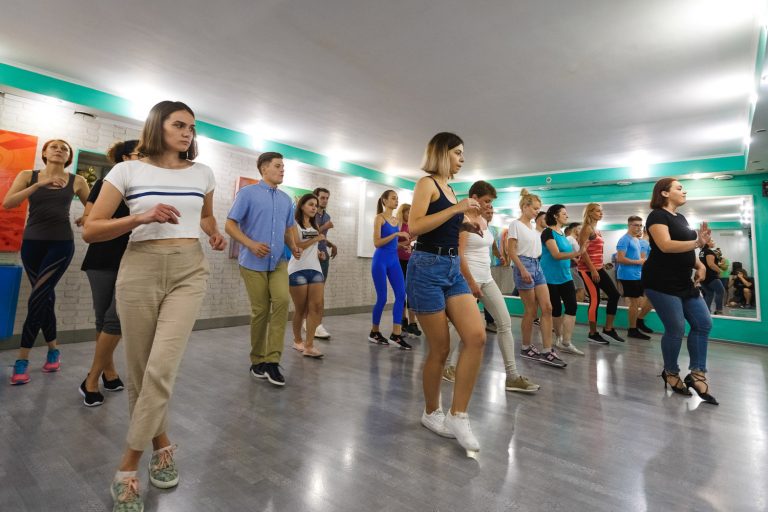
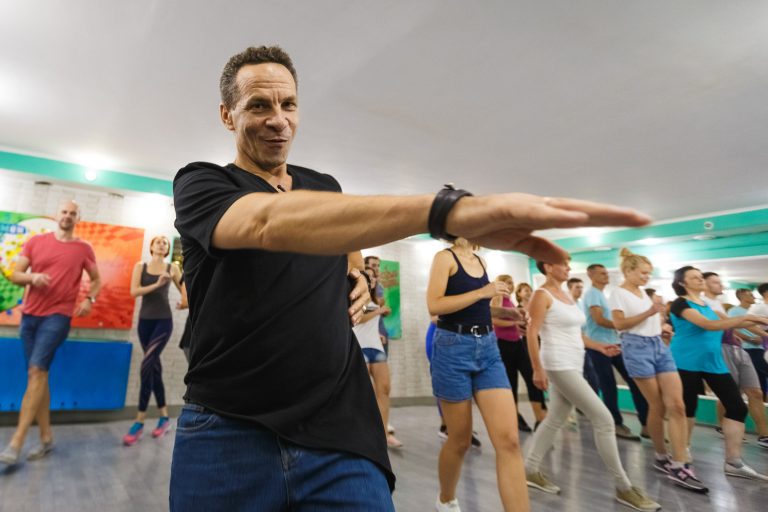
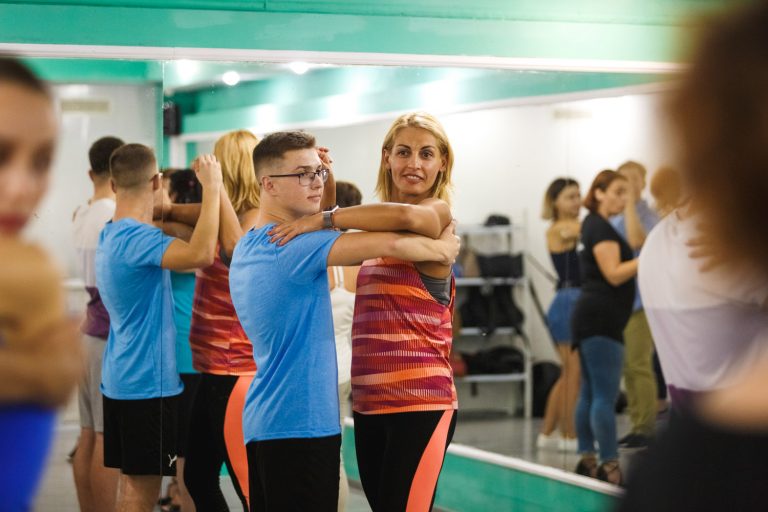
slideshow
Salsa Club teaches not only salsa but also many other dances, such as bachata, kizomba, cha-cha-cha, Afro-Cuban rumba, and son. All these dances may be performed both in pairs and solo. Latin American dances are considered social ones. That is, having reached a certain level, you can dance with any partner who has about the same range of knowledge and skills, improving the acquired skills at dance parties.
Other centres of Latin American culture in Kyiv, where you can not only dance but also listen to live music, include Buena Vista, the first Cuban place in Kyiv, and the Caribbean Club. Formerly there also used to be Habana and Salsita. Dance festivals are very popular among dancers. For the first time a large-scale international festival was organised by Salsa Club in 2005 during May holidays, hence the name ‘Salsamayovka’ (Maivka (Ukr.) is outdoor recreation in May). Every year the studio holds all-Ukrainian dance festivals in Kyiv and Odesa inviting both Ukrainian and world stars of Latin American dances.
Salsa Club also regularly participates in charity events under the aegis of the Cuban Embassy in Ukraine:
“Each country presents its culture, traditions, and food. The funds raised are donated to the needs of the cities or regions of the country, hospitals or children’s boarding schools.”
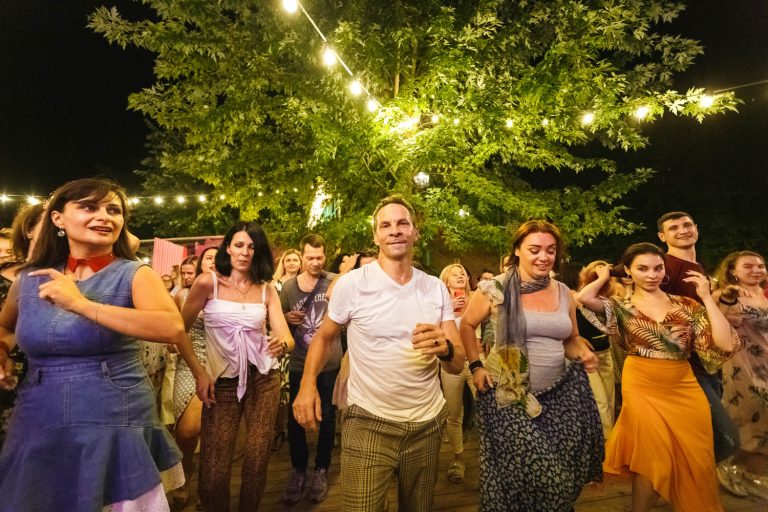
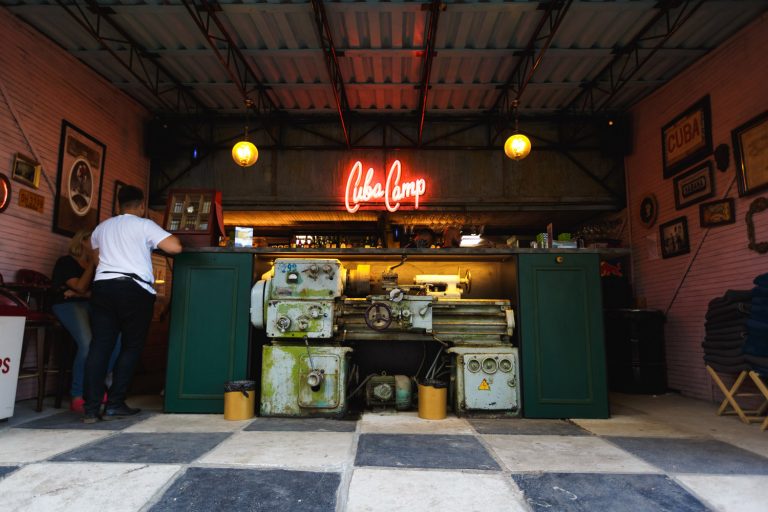
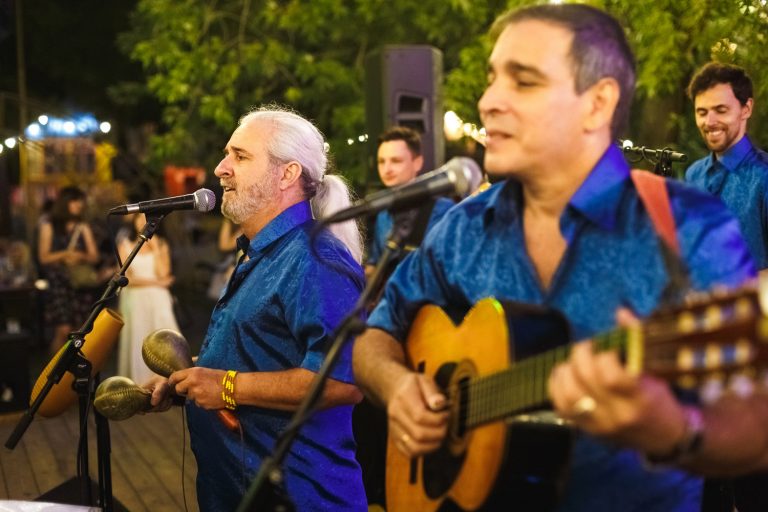
slideshow
Using the example of his family, Reinaldo Powell explains how Cuban culture and identity were formed:
“It is said that Spanish guitar and African drums are combined in Cuba. This combination created a unique mix. Everything merged like coffee with milk, and the population of Cuba was formed. On my paternal line, everybody is a Spaniard. My grandfather was a captain in the Spanish army. He married a Spaniard. My dad had a narrow nose, black straight hair, and he was tall, that is a typical Spaniard from Salamanca. And regarding my maternal line, my grandmother was from Jamaica.”
Reinaldo first came to Ukraine in 1986 as a participant of student exchange between the USSR and Cuba. As a senior lieutenant of the reserve of the Armed Forces of the Republic of Cuba in radio intelligence, he continued his studies at the Kyiv Higher Radio Engineering College (now the Kyiv Higher Engineering Radio-Technical College of Air Defense named after the Marshal of Aviation Pokryshkin). Reinaldo came to the Soviet Union with basic knowledge of Russian, as he began to study it in Cuba. He says that Ukraine has become an absolute discovery for him — from food to clothes. Perhaps the biggest surprise was the snow and cold in winter:
“When we first saw the snow, it was something incredible. We all took that snow and ate it. After that, all Cuban students fell ill with a sore throat and could not attend classes for another two weeks. Because we had eaten snow.”
Students from Vietnam, Korea, Germany, Mongolia, Bulgaria, and Poland studied in the group with Reinaldo. The Cuban recalls that there were also many students from Latin America in Ukraine at that time: Ecuadorians, Colombians, Peruvians, Chileans. Many of them remained in Ukraine after their studies, just as Reinaldo did.
A year after his arrival, Reinaldo had met a Ukrainian Halyna, who became his wife in three years. After receiving a military education in Ukraine and the diploma of a Spanish-Russian translator, he and his wife returned to work in Cuba. He didn’t know back then that it was only temporary:
“I worked ‘twenty-four for two’: I rested for two days and worked for twenty-four hours. When I was away all day, it was very difficult for my wife. She cooked on firewood, which was very, very difficult. Returning from work, I remember seeing my wife: she was thin, in shorts, fair-skinned, making coffee or food there. We slept on a narrow iron bed. It was humid and very cold in the mountains in winter.”
After three exhausting years in his homeland, Reinaldo finally decided to leave the military, and in 1994 the couple returned to Ukraine. The idea to open a dance studio did not come to the Cuban immediately. At first, Reinaldo tried many different professions: he worked as a secretary at the Cuban Embassy, a chef in a restaurant, a translator from Spanish. Although he has always had an interest in music and dance. Reinaldo says that energetic rhythms are in the blood of every Cuban:
“All Cubans dance from their birth, even when we are in the mother’s womb. We have music everywhere on the island, all day, almost twenty-four hours a day.”
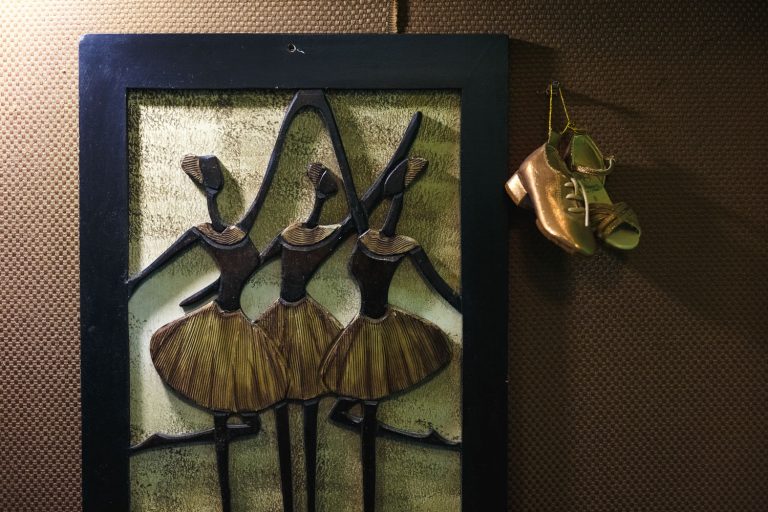
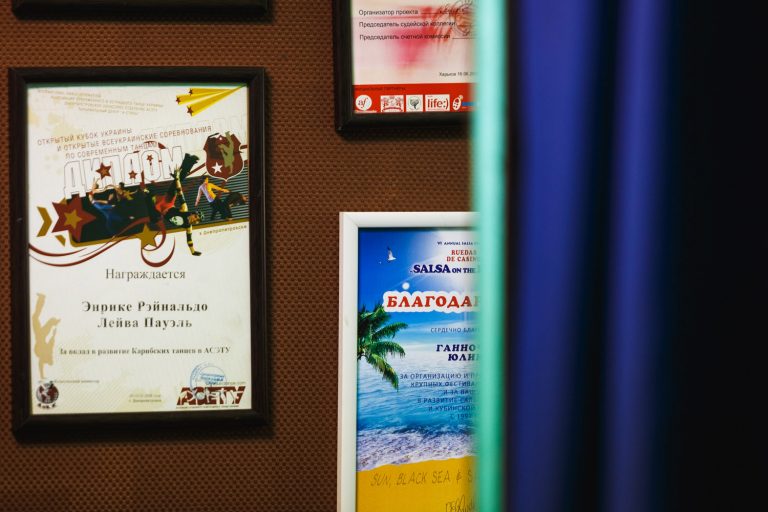
slideshow
In 1995, just after the birth of Anabel, his and Halyna’s daughter, the Cuban was invited to the dance group ‘Tropical’, where he performed with other foreigners for about six months with his own show. Since then, the charismatic dancer has also been invited to host various events. At one of them, Reinaldo met his future dance partner Yulia Hannochko, and together they later created their own dance product.
Gradually, more and more people wanted to get acquainted with Latin American dances, so Reinaldo and Yulia began to look for a spacious facility for the studio, which would fit everyone. When they opened, they didn’t even have the brand name at first. But in 1997, the first Latin American dance school in Ukraine was already known as ‘Salsa Club’:
“When we opened and called ourselves ‘Salsa Club’, people said: ‘Wow!’ There was no such thing in Ukraine back then.”
For more than 20 years of work, the studio has released multiple generations of dancers, who later opened their own dance schools. The Salsa Club brand became famous all over Ukraine, its branches gradually appeared in different cities of the country and abroad, and today there are 14 of them. The first branch appeared in Kharkiv, then in Odesa, later students from Poltava opened a studio in Prague. The Salsa Club family is growing.
Reinaldo dreams of opening a dance cafe. For him, dancing is relaxation, medicines, and a source of inspiration, and social dancing is a separate kind of pleasure:
“Social dances are a big positive- energy virus, which is spreading within a particular Ukrainian community, so that people begin to understand each other, become closer to each other, value themselves as individuals and as a nation.”
Reinaldo is also the president of the Cuban community in Ukraine. As of 2020, 325 Cubans were registered in Ukraine. In the 1990s, this number was higher, but many Cubans have since left Ukraine for other European countries.
Reinaldo admits that for most Cubans living in Cuba, there is no difference between Ukrainians, Russians or Belarusians. The only thing that, according to him, distinguishes Ukraine among other former republics of the Soviet Union (and now independent countries), in the minds of modern Cubans, is the Chornobyl disaster.
Cuba and Chornobyl
The Cuban Humanitarian Program ‘Children of Chornobyl’ operated from March 1990 to November 2011. The participants of the program were Ukraine, Belarus, and Russia, from where children and adults affected by the Chornobyl Nuclear Power Plant disaster came to Cuba for free treatment.Every two years, Reinaldo organises salsa tours to Cuba, thanks to which more and more Cubans learn about Ukrainians as an independent nation, and Ukrainians have the opportunity to see life on the island as it is.
“Cuba is a dream that is always with me, it always accompanies me. When I’m good and when I’m bad, I always remember my beautiful island, my family.”

Reinaldo mostly speaks Russian, but he understands Ukrainian very well and believes that Ukrainian should predominate in the public space. He always encourages his students to speak Ukrainian and clearly associates himself with Ukraine:
“I am a Cuban who lives permanently in Ukraine. I have a Ukrainian family: a Ukrainian wife and a Ukrainian daughter. And I consider myself a Ukrainian as well.”
Reinaldo Powell tells an unvarnished truth of the current situation in Cuba:
“Cuba remained in the 90s. When I worked in Cuba, the most paid jobs there were for the military and doctors. I had a salary which now is an equivalent to 20 euros a month. We had to live with this money for a whole month. Cuba now has the card system just like Ukraine had it after World War II. In return for the cards, everyone there is given four pieces of bread, ten eggs a week, and fish when it is available. Although the sea is around us, and fish should be in the daily diet. However, Cubans do not have a chance to eat seafood that easily because it is all owned by the state. Seafood is eaten mainly by tourists.”
As for Ukraine, comparing the country he saw 30 years ago with what it is now, the Cuban says that people have become more open to the new and freer in their views. This also applies to attitudes towards foreigners:
“Now every tenth person in Ukraine is a foreigner: Azerbaijani, Cuban, Ecuadorian. A lot of people from Africa already live here: they get married, mix, and it’s all completely different now.”

Anabel Chupryna
Just like for Reinaldo, for his daughter Anabel, dancing has become an integral part of life, and the Cuban culture is part of self-identification. Anabel was born in Kyiv and has already visited Cuba three times: at the age of two, ten, and fifteen. And although at the age of ten the girl still did not understand Spanish well, she has very pleasant memories of her father’s homeland:
“I really liked the atmosphere, the people, my dad’s family, the food, the ocean. I felt at home there (in Cuba).”
Anabel says she feels half Cuban, half Ukrainian. At home, the family speaks mostly Russian, while in the studio, Anabel and her father sometimes switch to Spanish. The girl never thought about moving to Cuba.
“Ukraine is my physical home. And Cuba is the home of my soul.”
However, interest in her own roots and the Cuban culture has only recently emerged. Despite the fact that Anabel was accustomed to hearing Latin American music at home since childhood and hearing the Spanish language from her father, the girl did not perceive her difference for a long time and did not even like her own name:
“Friends who have known me since childhood call me Anita. At school, everyone also called me Anita, because Anabel was considered a difficult name for children.”

As a teenager, Anabel got interested in the Japanese and Korean cultures and initially planned to associate her future career with these interests. In addition, the girl graduated from the music school with a degree in piano, so music was closer to her than dancing, which remained out of her focus for a long time.
During the third trip to Cuba, when the girl was fifteen, her father arranged a real excursion for her: he drove her to different parts of the country, time and again introducing his daughter to the culture of her ancestors, her family.
Eventually, Anabel decided to study Spanish philology, and it was at this time that she wanted to return to her own roots while following in her father’s footsteps in a dance career.
Anabel actively trained and participated in competitions: first with reggaeton, then with salsa and bachata. And within a year the girl began to teach dancing in the studio with her father. Anabel assures that there was no fear of teaching, on the contrary, rather interest and excitement awoke. And in the moments when she lacked experience or knowledge, her father always supported her:
“At the beginning, of course, it was a little difficult to understand psychology, to understand how to speak correctly, how to reach a person correctly, how to convey correctly. But, in fact, I liked everything from the first attempts.”
Later, Anabel began to help her father in organising festivals. At first, the girl was a translator for the foreign instructors, then she hosted shows, took care of advertising, helped with the selection of participants and the creation of posters. Reinaldo and Anabel are convinced that international festivals are first and foremost an opportunity for both novice dancers and experienced teachers to try a new manner and style of dancing, to understand the distant culture (which may seem even strange sometimes) better, and to make new contacts and acquaintances:
“This is how Ukraine learns about foreigners, and foreigners learn about us. There were many cases when foreign couples just came to visit the festival. Just because they like our people, they like the way people dance and the atmosphere itself.”
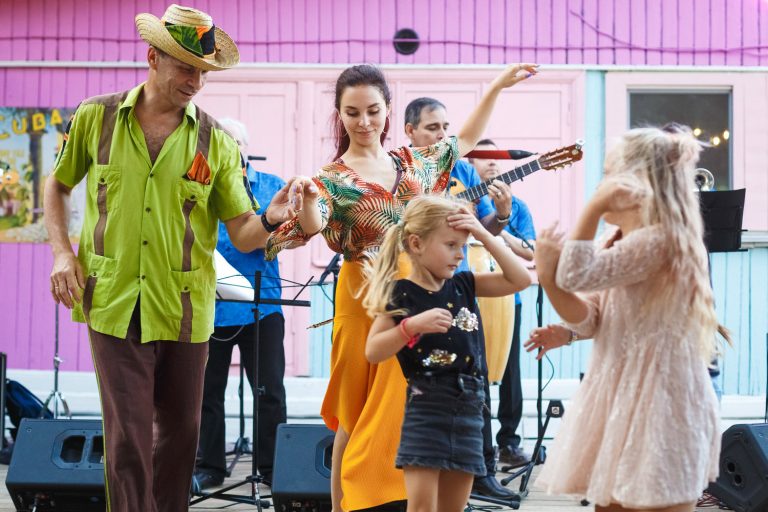
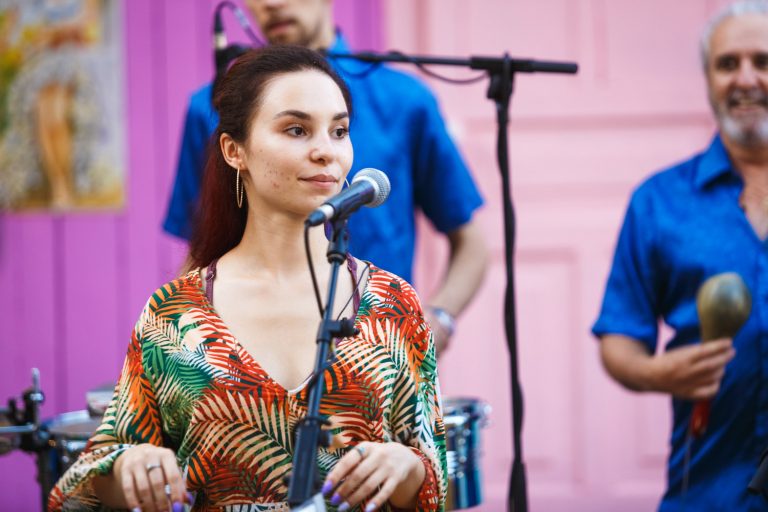
slideshow
‘Salsa’ means ‘sauce’ in Spanish, and first of all it is a musical genre that combines many styles and directions. In a broad sense, salsa is a combination of European and African cultures. Anabel explains that purely Cuban both music and dance are son (Spanish — son traditional), which is considered the ancestor of salsa. It is also impossible to imagine salsa without the Cuban rumba dance, which is closely associated with African folklore. Speaking of salsa, it should be noted that, in addition to the Cuban salsa, or, as it is also called, ‘salsa casino’, there are also Puerto Rican and Colombian versions. In general, salsa songs may have different themes, but for the most part they are love stories.
Salsa
Cuban dance of African origin, performed in pairs.For seven years now, Anabel has been teaching bachata, reggaeton, son, and rumba at Salsa Club. It is important for her to explain to students the essence of Latin American dances, how Cuban energy expresses itself, and to reveal the potential of each student. Anabel is convinced that a body is a language. Seeing a person dancing, you can understand a lot about their character, feel their insecurity or fears. Therefore, during her classes the girl focuses not only on movements and techniques, but also she teaches students to build a dialogue with themselves, to discover new verges:
“I think that if you teach dancing, then first of all you should be a psychologist and a teacher.”
Her own development as a dancer is no less important for Anabel than teaching. Before the pandemic, the girl often went to festivals in Italy and Spain, where she gave masterclasses and studied hard from foreign colleagues. Anabel loves to put on show acts in different styles, as this is the way to show off her dancing power to the fullest:
“Salsa for me is always about how I can show my nature.”

Anabel explains the rapid growth in the popularity of Latin American culture in the world by various trends. Firstly, the perception of female beauty has changed. World pop culture has abandoned any ideals of appearance, so every girl, regardless of skin color, hair or figure, can become an idol. Secondly, Latin America has always been associated with celebrations and ease, and the global creative industry has picked up on this mood, especially in the music industry.
In Ukraine, the Latin American community has grown significantly in recent years. Cubans in Ukraine are mostly people aged 40 to 50, there aren’t many young people. But among the representatives of South American countries there are many students and young migrants, in particular from Ecuador, Peru, and Mexico. Anabel herself worked in pairs with Ecuadorians for some time, and a significant percentage of her classes were Hispanic students:
“They (students) all like dancing, they all like any opportunities which allow them to feel at home again.”
Before the pandemic, Anabel had many dance and music plans: new shows, festivals, trips abroad, which are currently on pause. Therefore, the dancer uses this time for self-improvement and finding new approaches in teaching. Anabel is convinced that to achieve any dream, you need to work and move confidently on your way:
“There is a desire: to always know what I want and where I am going. That is, when you yourself are a pendulum for many people, it is very important to find your level.”

The Cuban Revolution. Cubans in Ukraine
The first Cubans on the territory of modern Ukraine appeared in the Soviet times. The friendship between Cuba and the republics of the USSR was preceded by the events that forever changed the course of the history of the island nation. In 1953, the famous Cuban Revolution began, led by Fidel Castro, which resulted in the overthrow of the President Fulgencio Batista’s military dictatorship in January 1959. Cuba soon severed diplomatic relations with the United States and entered a phase of confrontation. The United States, on which Cuba’s economy previously depended heavily, imposed economic sanctions and launched a total economic blockade of the island. At the same time, Cuba’s previously severed diplomatic relations with the Soviet Union resumed. Then, from the 1960s until the 1990s, the Soviet military, agricultural and other equipment was regularly being supplied to Cuba, and civilian and military specialists were coming there. In 1961, Fidel Castro officially proclaimed Cuba’s course towards socialism.
The student exchange between the republics of the Soviet Union and Cuba was also initiated. Cubans mainly studied in military and medical specialties. Some created families and stayed in the USSR. Later, in the late 1980s and early 1990s, locals began to leave Cuba en masse, disagreeing with Castro’s authoritarian regime. The Soviet Union was then the only direction for them to go without any hindrance.
Those Cubans who came to already independent Ukraine or witnessed the collapse of the USSR got a chance to run their own businesses in here, open restaurants, develop dance and music culture, teach Latin American dances to Ukrainians, and hold Cuban music and social dance parties.

Nelson Carasco: music from scratch
The leader of the Cuban music band Habana Nelson Carasco has been living in Ukraine for 16 years. Once he became the first Cuban to open a Cuban place in Ukraine, and, as he jokes, the first leader of a music band without any musical education.
Nelson lives in Kyiv and, in addition to music, has been working as a taxi driver for several years. The Cuban does not speak either Russian or Ukrainian well, and most passengers, noticing the Cuban flag in the car, even try to say a few words in Spanish. Nelson talks about Cuban culture to his particularly curious passengers:
“During trips I tell passengers about what else I do, besides being a taxi driver. And sometimes they come to Cuban music concerts after that, I see them there. Such things happen sometimes.”
Nelson admits that while living in Cuba, he did not listen to Cuban music at all. His passion was rock. However, everything changed when the man left his homeland: Cuban motives now remind him of home:
“I miss Cuba. I miss my childhood and everything that happened to me there. And I try to go back to those distant times with music.”
While still living in Cuba, Nelson met a Ukrainian woman and they stayed in touch for a long time afterwards. In 2001, the man moved to Miami, where many Cubans have emigrated since the 1960s. After several years in the United States and later in the Netherlands, the Cuban went to Ukraine, where he later married and had a daughter, Sylvia. Nelson also has a son who emigrated to Miami at the age of 15, just like his father once did.
Initially, the Cuban worked in Ukraine for an American IT company and intended to go to the USA again for a while, but later started his music career. Nelson met musicians who played Latin music in one of Kyiv’s malls, and wanted to try his hand as a vocalist. Every week the band Salsa Kings played in the popular at those times Kyiv art club ‘44’, located in Khreshchatyk Str., 44. This band became like a family to him:
“I am proud to have played and still play with the best musicians of Kyiv. Saxophone, trumpet, percussion, keys, bass. I remember them all very well.”
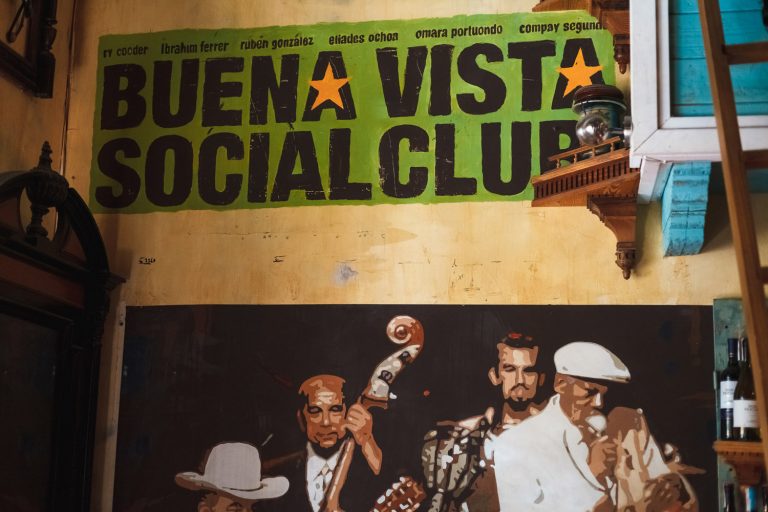
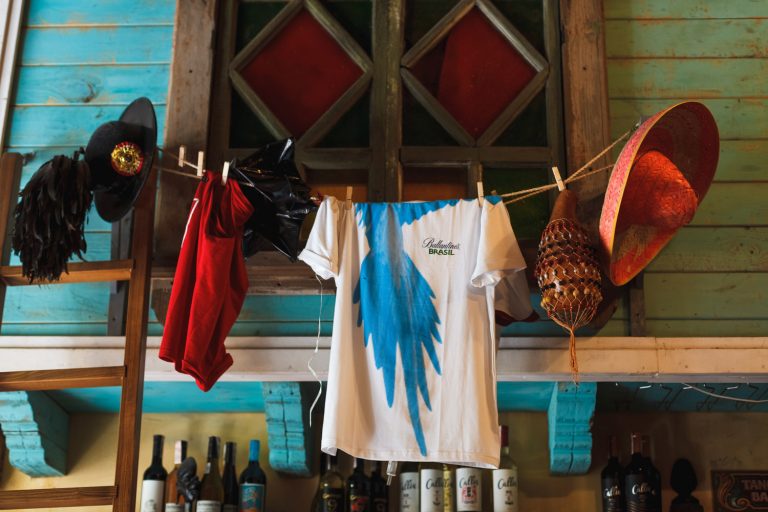
slideshow
Nelson is not a professional musician, and he always emphasises that music brings him pleasure first of all; however, he rates the level of Ukrainian musicians very high, as well as the ability to feel the Cuban rhythms.
The reasons why Nelson decided to leave his home were entirely political. The Cuban did not support Fidel Castro’s regime. After emigrating, Nelson was twice at home, and he believes that Cuba is changing for the worse. Nelson never sings songs about Che Guevara and does not attend events organised by the Cuban Embassy:
Ernesto Che Guevara
A Cuban revolutionary, one of the leaders of the Cuban Revolution, an associate of Fidel Castro.“If the situation in Cuba changes for the better, and I mean not ‘if’, but ‘when’, then I will be the happiest man and will go to the embassy of free Cuba.”
In 2007, Nelson received an offer to launch his own restaurant business, and then the story of Buena Vista, the first Cuban place in Kyiv, began. Mostly Cubans worked there: both staff and musicians, whom Nelson personally invited. Today, Buena Vista remains one of the most prominent centres of Latin American culture in Kyiv:
“You seem to sow a seed, a part of yourself here in Kyiv, and somehow this seed sprouts, and a tree grows. And the tree grows quite quickly, and its crown is wide, open to many. This is what ‘Buena Vista’ is. And it’s amazing.”
When a person is away from home, one tries to keep anything reminiscent of their hometown, preserve their memories and bring them to life. For the musician, ‘Buena Vista’ was his creation, but in the end, he had to leave this business. Later, the musician opened another Latin American place, which, however, did not last long, so Nelson decided to dedicate himself to music.

On his first impressions of Ukraine, Nelson says that in many ways it reminded him of Cuba. First of all, the musician noted the friendliness and sincerity of Ukrainians:
“I immediately liked Ukraine as soon as I came here. I liked the approach of Ukrainians to life: to live with a smile, no matter what. The people here are very friendly.”
The Cuban has great respect for the political engagement of Ukrainians and the desire for justice. And Nelson still often tells his acquaintances about the revolutions in Ukraine:
“I love Ukrainians because they have already led revolutions (so-called ‘Maidans’) twice, fell under bullets, and overthrew the regime that did not satisfy them.”
supported by
Material prepared with support of United States Agency for International Development (USAID)


